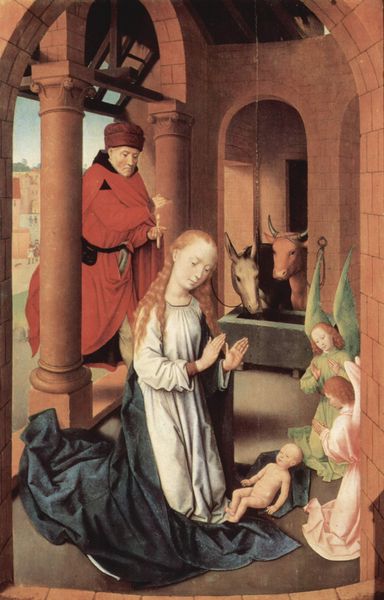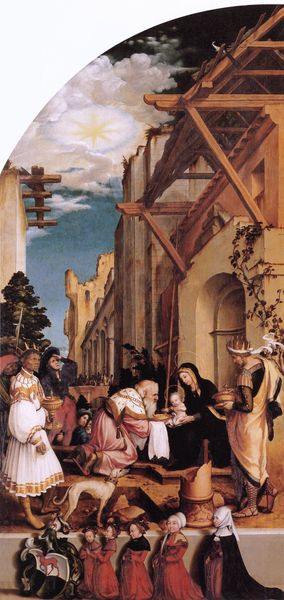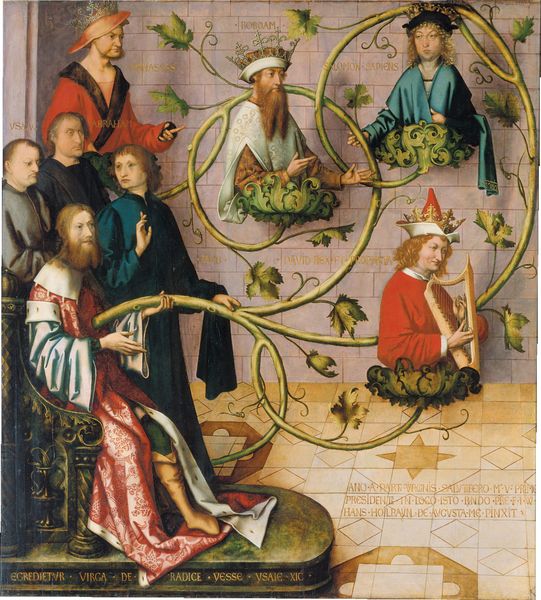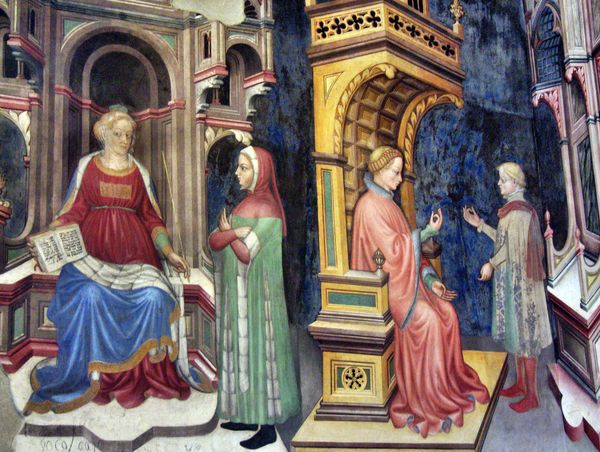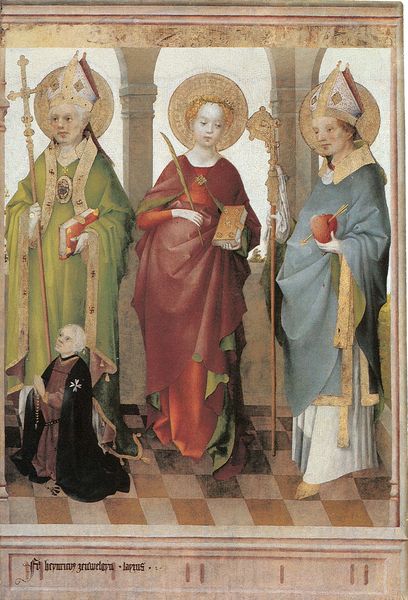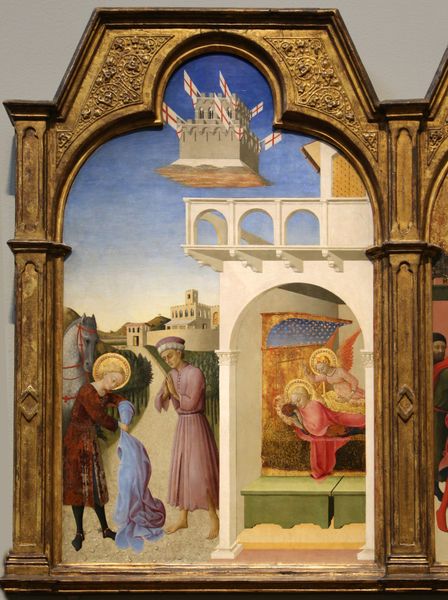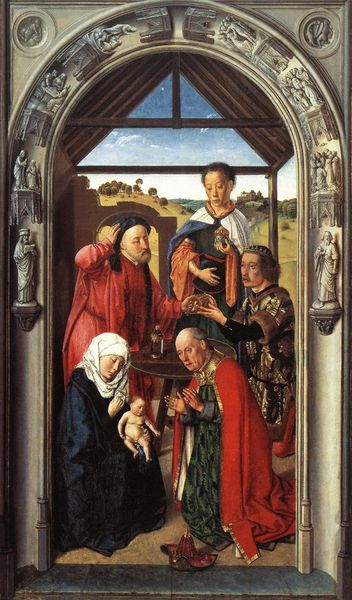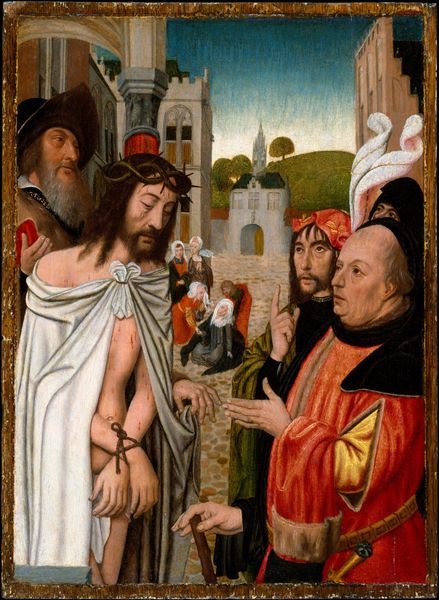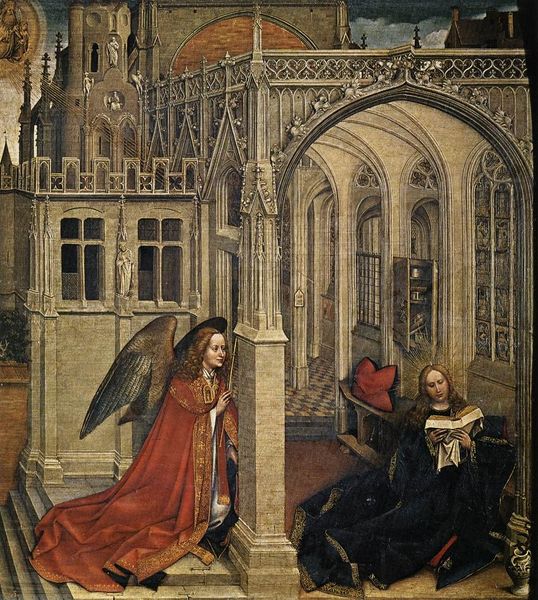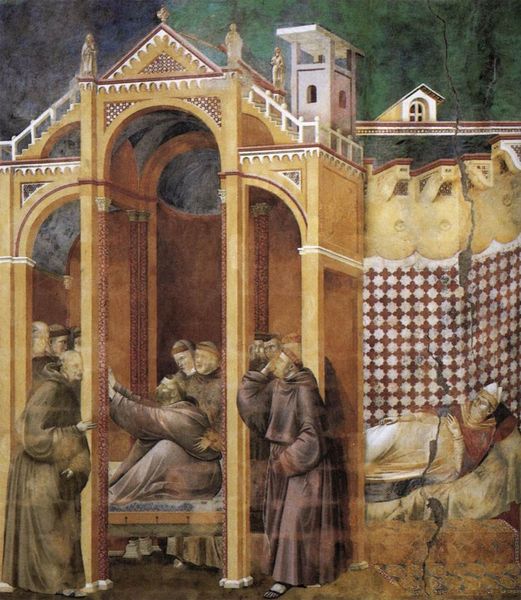
The Miracles of San Bernardino. The Healing of a Young (detail) 1473
0:00
0:00
pietroperugino
National Gallery of Umbria (Palazzo dei Priori), Perugia, Italy
painting, oil-paint, fresco
#
portrait
#
narrative-art
#
painting
#
oil-paint
#
fresco
#
oil painting
#
christianity
#
history-painting
#
italian-renaissance
#
portrait art
#
fine art portrait
Copyright: Public domain
Curator: This is a detail from Pietro Perugino's "The Miracles of San Bernardino. The Healing of a Young," painted around 1473. It is currently housed at the National Gallery of Umbria in Perugia. Editor: It strikes me immediately as incredibly crisp. I mean, look at the details in the young man's tunic – and his strangely stylish cap! Everything feels meticulously rendered. Curator: Perugino was indeed a master of detail, but he was equally adept at infusing his works with layers of symbolic meaning. Notice how the young man stands upright, perhaps representing renewed health and vigor? Editor: And the materials – the paint, likely oil or perhaps tempera on a fresco background. I wonder about the pigments available at the time, giving those muted but somehow vibrant colors. Where did Perugino source his materials? Who were his suppliers? The red is particularly striking. Curator: The use of color is significant. Red, of course, has strong associations with sacrifice, divinity, and healing within the Christian tradition. The young man is cloaked almost entirely in this color. The image presents an intersection between earthly recovery and celestial favor. The monks around him clearly represent conduits to that divine healing power. Editor: It also brings up the socio-economic factors. The commission itself – who paid for this, what was their relationship to the Church or San Bernardino himself? This wasn't created in a vacuum; the means to create this image relied on someone's wealth and patronage. Fresco alone involved such logistical demands and specialized craft knowledge. Curator: Absolutely. This piece functions as both devotional art and a display of power and affluence. The life of San Bernardino, the focus of these scenes, spoke to an audience deeply connected to the church's role in their lives. Consider the architecture in the painting, for example, which invokes both Roman and contemporary structures: is this a display of stability or, perhaps, power? Editor: That building almost feels staged, like a theatre set to emphasize a hierarchy. It reminds you that paintings are themselves objects—laboriously produced things to be consumed and traded. Still, all those subtle earthly tones and touches do indeed radiate outwards with peace. Curator: In observing the enduring echoes of these figures in cultural memory, in art itself and Perugino's own later works, these details remain timeless expressions of faith, beauty, and what exactly it meant to be healed within the fifteenth century. Editor: Perhaps beauty, craft and healing power exist interdependently even now as material practices—something to contemplate.
Comments
No comments
Be the first to comment and join the conversation on the ultimate creative platform.
